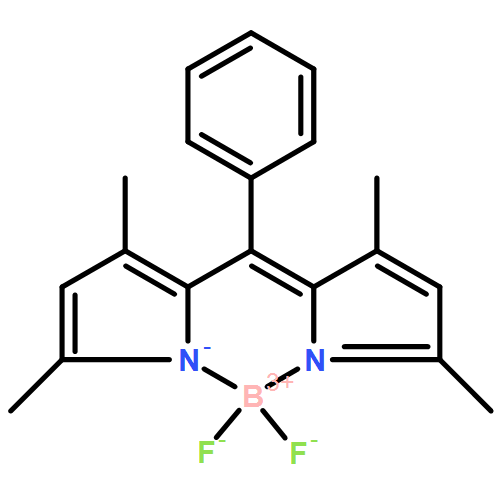Co-reporter: Qin-Qin Hu, Yi-Zhou Zhu, Shao-Chun Zhang, Yu-Zhang Tong and Jian-Yu Zheng
pp: 15523-15530
Publication Date(Web):23 Jul 2015
DOI: 10.1039/C5DT01184A
Three meso-2′-linked porphyrin–BODIPY hybrids which contain one, two, and four BODIPY units (BDP–ZnP, 2BDP–ZnP, and 4BDP–ZnP), respectively, were synthesized. Their photophysical properties were investigated by UV-vis and fluorescence spectroscopy, cyclic voltammetry, and femtosecond transient absorption spectroscopy, as well as by theoretical calculations. The electronic properties of the constituent chromophores were found to be largely retained in these hybrids. Meanwhile, efficient and rapid energy transfers from 1BDP* to ZnP were evaluated to be 1.2 × 1011, 1.5 × 1011, and 1.1 × 1011 s−1, respectively.
Co-reporter: Qin-Qin Hu, Yi-Zhou Zhu, Shao-Chun Zhang, Yu-Zhang Tong and Jian-Yu Zheng
pp: NaN15530-15530
Publication Date(Web):2015/07/23
DOI: 10.1039/C5DT01184A
Three meso-2′-linked porphyrin–BODIPY hybrids which contain one, two, and four BODIPY units (BDP–ZnP, 2BDP–ZnP, and 4BDP–ZnP), respectively, were synthesized. Their photophysical properties were investigated by UV-vis and fluorescence spectroscopy, cyclic voltammetry, and femtosecond transient absorption spectroscopy, as well as by theoretical calculations. The electronic properties of the constituent chromophores were found to be largely retained in these hybrids. Meanwhile, efficient and rapid energy transfers from 1BDP* to ZnP were evaluated to be 1.2 × 1011, 1.5 × 1011, and 1.1 × 1011 s−1, respectively.


